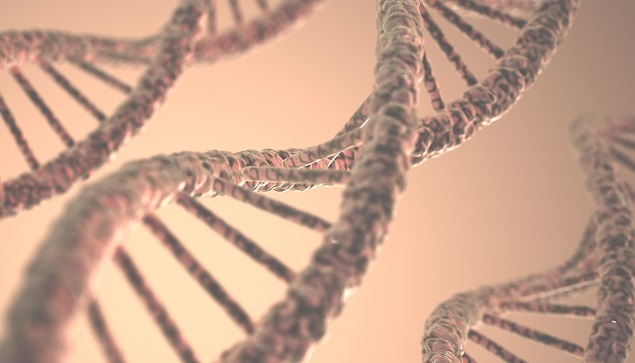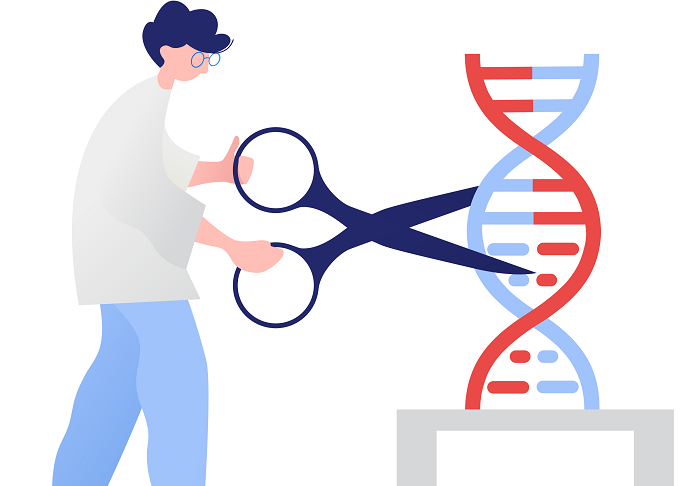
 Data Structure
Data Structure Networking
Networking RDBMS
RDBMS Operating System
Operating System Java
Java MS Excel
MS Excel iOS
iOS HTML
HTML CSS
CSS Android
Android Python
Python C Programming
C Programming C++
C++ C#
C# MongoDB
MongoDB MySQL
MySQL Javascript
Javascript PHP
PHP
- Selected Reading
- UPSC IAS Exams Notes
- Developer's Best Practices
- Questions and Answers
- Effective Resume Writing
- HR Interview Questions
- Computer Glossary
- Who is Who
What is the full form of DNA?
Introduction
Deoxyribonucleic Acid (DNA) is one of long chain of chemical compounds that are present in the nucleus and carry genetic information.

DNA is a double helical structure that gets copied and passed into next generation. RNA is a single stranded structure that are responsible for protein synthesis.
Definition of DNA
DNA is a double stranded helical ribo nucleic acid structure that are present in the nucleus responsible for the production and development of organisms.it is a self-replicating molecule and the main constitute of the chromosome. The organic molecule is present both in prokaryotes and eukaryotes.
There are three different types of DNA
A-DNA - a right handed DNA that are mainly formed to protect the DNA under extreme conditions like dehydration.
B-DNA - is the most common type of DNA conformation with right handed helical structure.
Z-DNA - the DNA is the left handed helical structure that are important for regulating the genes.
Discovery of DNA
The discovery of DNA was first done in the year 1869 by a Swiss scientist Fredrich Miescher, he isolated the organic molecule from the nucleus of the lymphoid cells and named it nuclein.In 1951 Roselind Franklin found the structure of DNA through X-ray crystallography and the double helical structure of the DNA was confirmed by James Watson and Francis Crick in the year 1953, hence the model is called Watson and Crick model.
Structure of DNA
DNA are large polymers; that are built repeatedly using single molecules called monomers. It is double stranded helical structure that are made up of 4 nitrogen bases; Adenine(A),Guanine(G),Thyamine(T) and Cytosine(C). It has two polynucleotide chains and the phosphate and sugar-deoxyribose that form the backbone of the DNA. the sugar molecule is a ring shaped structure that contains hydroxyl group attached on the third carbon. The nitrogen bases are paired to each other by hydrogen bonds.
The pairing is based on Chargaff's rule; adenine and guanine are called purines and thiamine and cytosine are called pyramidines. According to the rule the Adenine always pairs with thymine and guanine always pairs with cytosine. The bases are held together by hydrogen bonds there are three bonds between guanine and cytosine and there two hydrogen bonds between thymine and adenine.
The phosphate group, sugar and nitrogen bases together are called nucleotides.The strands are twisted and in each turn there are ten nucleotides. The human DNA is made up of 3 million base pairs and 99 percent in same among all human beings.
Function of DNA
The DNA are present inside the nucleus in highly coiled form with the help of proteins called histones, the coiled form of DNA is called chromatin. These chromatins are condensed further during cell replication to become chromosome. There are 23 pairs of chromosomes in human beings. The length of the DNA that codes for a protein is called GENE. The DNA are called heredity units that are passed generation after generation.

The Genes are responsible for transcription and translation. The conversion of DNA to messenger RNA (mRNA) is called transcription and the conversion of mRNA to protein is called translation or protein synthesis. The transcription process takes place in the nucleus and the mRNA formed leaves the nucleus through the nuclear pore and releaches the cytoplasm where the protein synthesis takes place.
In the translation process three types of RNA are used; mRNA which acts as a template, rRNA and tRNA. Proteins are polymers that are made up of repeated units of amino acids. These polypeptide chaaind fold into secondary,tertiary and quaternary structure to form proteins. Proteins are the structural and functional units of many organisms.
The DNA is also involved in other processes like
DNA fingerprinting
Mutations
DNA replication
Cellular metabolism
Gene therapy
Conclusion
Deoxyribonucleic acid (DNA) is double stranded helical structure that are responsible to the production and development of an organism. The strands of the DNA are complimentary to each other and are responsible for protein synthesis.
FAQs
Q1. What are mutations?
Ans: Any change in the DNA due to chemicals or ratiations are called mutations. The chemicals that cause mutations are called mutagens. The mutations are of various types
Deletion
Insertion
Substitution
Translocation
Q2. What is DNA replication?
Ans: The process of copying the genome DNA is called replication this happens before the cell division so the daughter cells gets each copy of the parent DNA.
Q3. What are the enzymes required for DNA replication?
Ans: The enzymes that are required for the replication are, helicase , DNA polymerase, DNA ligase,primase, topoisomerase,DNA polymerase II and DNA polymerase III.

